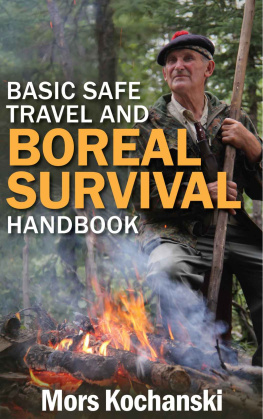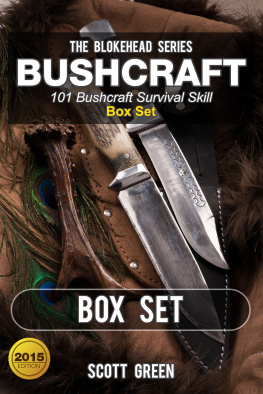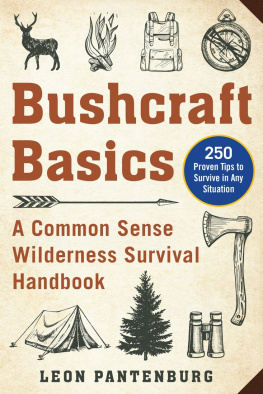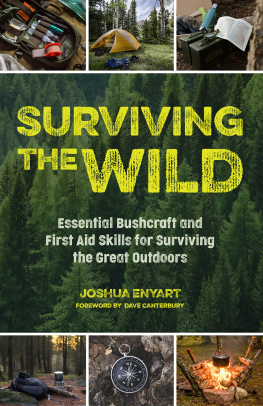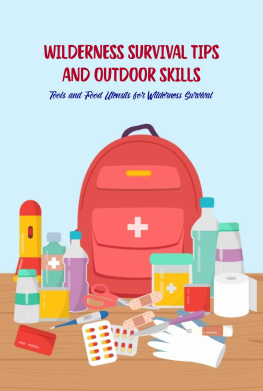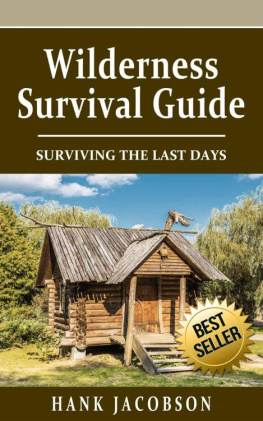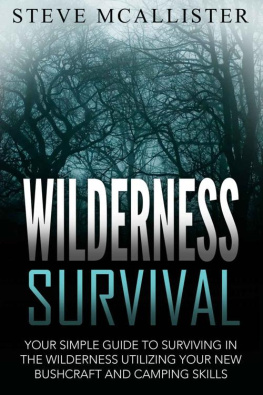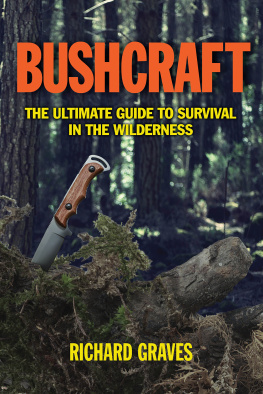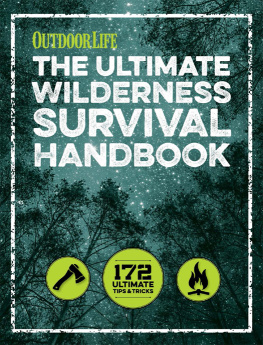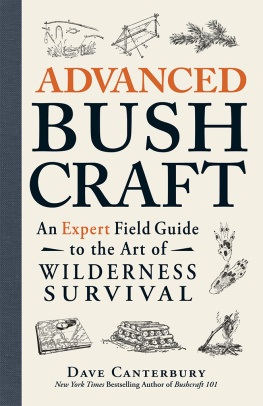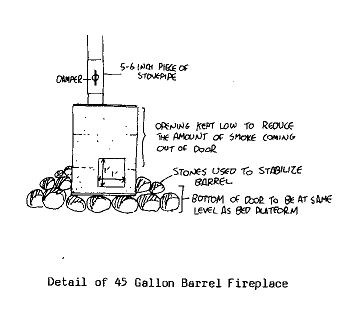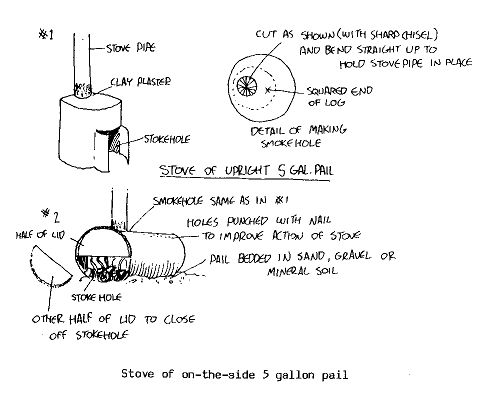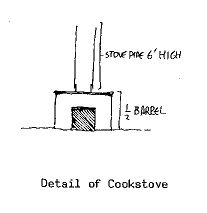All rights reserved. No part of this book may be reproduced by any means whatsoever without written permission from the publisher, except brief portions quoted for purpose of review. All survival scenarios by nature are life-threatening. Some of the information presented in this book, if used incorrectly, could help kill you. Anyone who provides training that guarantees your safety during an outdoor survival situation is either a fool or a liar. Neither the author, the publisher, nor anyone else assisting in the creation of this book is responsible for your ultimate fate upon using the material contained within these pages.
P.O. Box 483, Wildwood, Alberta T0E 2M0
The guide was compiled for the benefit of Outdoor Educators and the Alberta Junior Forest Wardens movement when the articles in Wilderness Arts and Recreation magazine went out of print. The magazine was published in the early 70's and many of the articles were the basis of the content of the book BUSHCRAFT. As the Forest Warden's developed their own handbooks the Woodstravel Guide faded from the scene but continued to be popular with Outdoor Educators and other enthusiasts as it contained information not found elsewhere. Some articles are earlier versions of some chapters found in "Buschraft" and it seems many readers enjoy the difference between the two. The Guide is being made available through the efforts of Karamat Wilderness Ways.
I. Wilderness Living Skills
A) Site Development
There may be some merit in avoiding the development of permanent sites for carrying on outdoor programs. Such sites usually involve considerable expense and if left unattended are often subjected to vandalism.
An easily movable facility can be relocated when the current site is becoming over-worn or the local fuel supply is running out. It can also be folded up and stored in the off-season.
As time goes on, roads are built, and as other local developments are carried out, better sites may become available to move to.
When money is scarce many programs never get started because of the prohibitive initial outlay that is required to develop a permanent facility. If considerable development is undertaken at a given site one may be committed to using it for a long time because of the money, time and labour tied up in it. Should local interests wane or be suspended temporarily, little is lost.
The readily moveable facility may provide a more practical experience for the users as an example of a type of comfortable natural disaster, or other crises.
1. Shelter
The proposed shelters use as much locally available materials as possible. This saves on costs and the effort in bringing in outside materials. The simplest and most effective shelters are the teepee and elongated teepee types which use nothing but straight poles in there construction. They have a low overhead volume for easy heating, yet have enough of a floor space to accommodate a large bed space and may utilize a wide variety of cover material depending on the amount of money available. This type of shelter is also just as useable in the winter as it is in the summer.
a) The Sleeping Platform
The sleeping platform, which is generally about chair-seat high , is constructed of poles about the length of the tallest user and spaced about a palm width apart. Some platforms may use a layer of boughs if these are available. It is simpler however, to use only the poles in conjunction with 3 inch thick open cell foam combined with a 1/4 inch closed cell foam. This will provide a very comfortable mattress and do away entirely with the need for boughs. This way you are not limited to spruce, so that aspen and pine will be adequate.
Where transportation to the site is not a problem, and where the expense is allowed, 1/2 inch plywood may be used instead of the numerous poles.
b) Heating Stoves
The teepee structures can be heated with common air-tights, or in the interest of greater economy, with homemade stoves fabricated from 45 gallon barrels. The use of stoves wherever possible may reduce the fuel consumption considerably, especially where it has to be hauled in. The simplest stove is a barrel stood on end with an opening cut out of the side, which may be left open to create the effect of an open fireplace. If a close fitting hinged door is put on the barrel stove, it will operate more like a conventional airtight stove. For winter, a more effective stove is made when the barrel is laid on its side with the door cut in one end. Longer wood can be used and the stove can be filled more compactly.
For smaller shelters (1-6 people) smaller barrels or 5 gallon pails may be used for stoves. Unfortunately, many metal pails are being replaced by plastic ones so that these types of stoves may not be feasible in a few years.
A cooking stove for use out-of-doors may be made from a half barrel. Cooking with pots and bringing water to a boil can be accomplished by use of an Australian crane. A barrel cooking stove will be more fuel efficient and will allow you to work closer to it when using a frying pan.
ATTENTION-SAFETY ISSUE: All the barrel stoves have a smokestack or stove pipe to carry the smoke away above the head. In the interests of stability and safety, a collar has to be attached to the barrel so that the stove pipe will not come off easily. This collar may be welded or bolted on. It is a small detail that should have considerable attention paid to it or the result is usually more smoke leakage and the occasional separation of the stove pipe from the stove.
Whenever possible barrel stoves should be set up on rocks or on inorganic soil, with some rocks piled around the base to improve the stove's stability. Any organic material under or near the stove may smolder and fill the shelter with smoke, or worse yet burst into flame and damage the shelter or any equipment nearby.
Air-tights may be more feasible than home made stoves in some circumstances. A suitably large airtight comparable to a barrel stove will likely cost at least 150.00. It's life expectancy is remarkably short, especially if it is allowed to get wet; it will then ruse through very rapidly.

